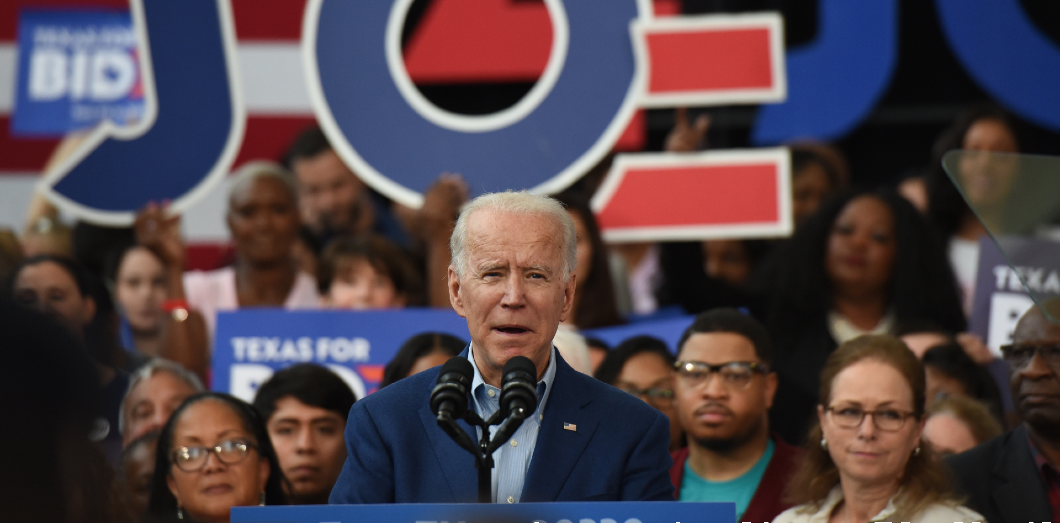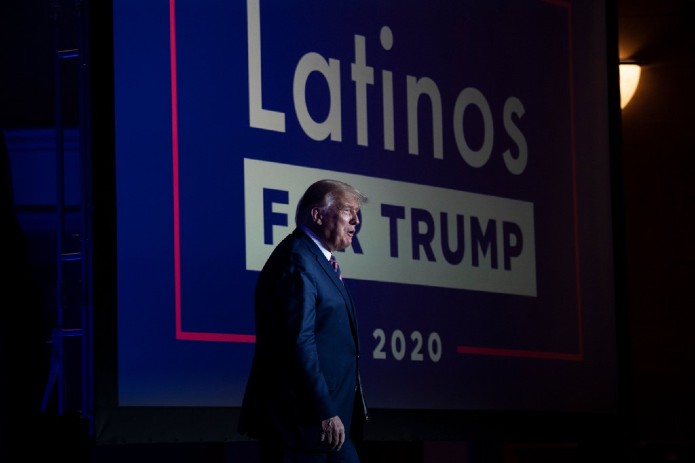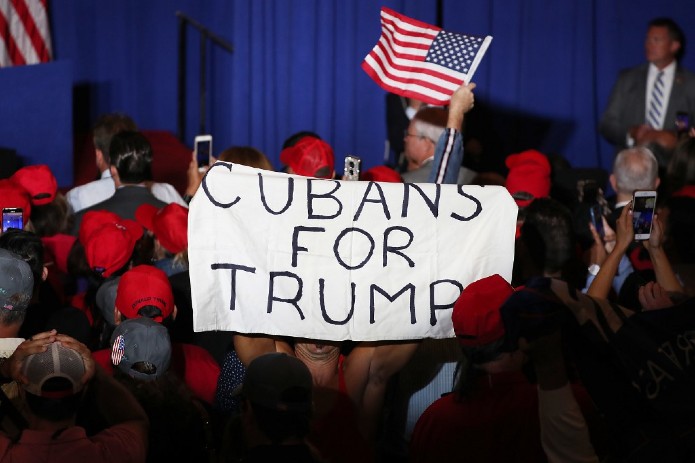More On: Joe Biden
Through the U.S. Ambassador, Hunter Biden and his associates tried to get money from the Irish in 2011
The raid on Donald Trump's Mar-a-Lago involved Joe Biden's White House
As Hurricane Ian approaches Florida, Biden and DeSantis finally talk
Lawyer for Hunter Biden's 'sugar brother' is said to have spied on the set of 'My Son Hunter'
Hunter Biden seemed to beg a drug dealer in Maryland to send drugs to a LA hotel
Despite Biden's victory, it is time for introspection for the Democrats, whose results with the Hispanic electorate have been far less clear-cut than expected in crucial American regions.
After days of staring at CNN's map and zooming in on dark counties in mid-Pennsylvania, the United States finally has a new president-elect. With over 75 million votes, according to the latest tally, Joe Biden won the biggest popular vote in the country's history. But while the 2020 election was not as close as it was initially thought, it was not an anti-Trump plebiscite either. The outgoing president received over 71 million votes, around 8 million more votes from his 2016 score.
Now is the time for introspection for the Democratic Party, which must question its results with certain communities to learn from its mistakes. The vote of the Latino electorate, in particular, is at the heart of the conversations of recent days: if it remains with a very large Democratic majority, it was less decided than expected in certain regions of the country crucial during the presidential elections, such as the Florida and Texas.
A multitude of communities and realities
Because these elections underlined the heterogeneity of the Hispanic vote, too often considered as monolithic and acquired by the Democratic Party. In 2020, some votes from the Latin American community allowed a blue push in traditionally Republican states, such as Arizona or Georgia, while others voted for Donald Trump in some counties in Florida. These discrepancies are explained by the multitude of realities encompassed under the terms "latino", "latinx" (a non-gender term favored by some activists), or "hispanic".
"Hispanic voters are similar in that they are from countries where Spanish is spoken, and they may also have some knowledge of the Spanish language themselves, but that ends there," says Jaime Dominguez , who teaches Latino politics at Northwestern University. An observation shared by Eduardo Gamarra, professor of political science at the International University of Florida: “Some are white, some are racialized, some are black. Some are rich, others poor. Mostly, they come from different countries and the most important thing is that they think differently too - some are conservative while others are liberal, and some do not belong to any party. ”

Among the factors influencing the Hispanic vote we find, according to the American statistics site Five Thirty Eight, classic political dividing lines such as the age or sex of voters (young people are more to the left, as well as women of origin. Hispanic), but also others more specific to these communities such as the date of immigration to the country: Latinos and Latin Americans born abroad and their children will be more likely to be Democrats than those whose families has been in the United States for at least three generations. Another crucial factor: their country of origin.
Trump acclaimed by the Cuban community in Florida
The community that stands out the most from the discourse according to which the Latin electorate would vote mainly democratic in the United States is that of the Cuban Americans of Florida. In Miami-Dade County, the most populous in the state, Hillary Clinton was thirty points ahead of Donald Trump in 2016 (63.2% against 33.8% for the Republican).
This year, it is again Biden who wins in this area but with a difference of less than ten points (53.3% against 46% for Trump). The outgoing president won nearly 200,000 new votes in that county - a crucial increase when you consider that Donald Trump won Florida with just over 370,000 votes.
This rise in power can be explained above all by its success with the Cuban community. A plebiscite illustrated in this infographic from the New York Times which draws the outlines of neighborhoods with a Cuban majority:
In awe of my colleagues who stayed up all night to pull off this analysis of results in battleground states. Here's one map showing precinct-level results in Miami-Dade County: https://t.co/Rw0nFTdN1w pic.twitter.com/PCVfCpHmZK
— Lauren Leatherby (@LaurenLeatherby) November 5, 2020
The Cuban community makes up just 4% of the Hispanic population of the United States, but 29% of that of Florida. There have been several waves of Cuban immigration to the state, the region of the United States closest to the island, since Fidel Castro came to power in Havana in 1959. Links between the local Cuban community and the Republican Party are over forty years old. The GOP was able to detect early on the potential of such an electorate in a key state for any US presidential election.
"In the 1980s, the Republican Party gave them enormous attention and thoughtfulness, which laid the foundation for an electorate that remained very loyal for at least two decades." - Eduardo Gamarra, teacher
“In the 1980s, an important phenomenon took place where Republicans began to pay attention to the Cuban community in Florida, because they saw in them populations who, once naturalized, could become voters. , explains Eduardo Gamarra. The party paid them enormous attention and thoughtfulness, which laid the foundation for an electorate that remained very loyal for at least two decades: in 2004, 69% of Cuban Americans still declared themselves Republicans. "

The community's loyalty to the Republican Party has weakened somewhat under the presidency of Barack Obama, in particular due to the emergence of new generations of voters, more to the left than their elders and less concerned about relations with Cuba.
“Under Obama, the dynamic changed and the share of Cuban Americans who identify as Republicans has fallen to around 49%,” says Eduardo Gamarra. An evolution that would explain the rather mediocre results of Donald Trump in Miami-Dade County in 2016.
Omnipresence
So what happened in four years for the outgoing president to obtain 71% of Cuban-American votes in 2020, according to the first polls? Three explanations, according to Eduardo Gamarra: “First, the Republicans spent a lot of time here, they were constantly there. Then, they really pampered the community by offering them important positions like that of Ambassador to the Organization of American States, or by granting a privileged role to Senator Marco Rubio with the government. ”
"Republicans know the difference between a Colombian, a Venezuelan, a Cuban and a Nicaraguan." - Eduardo Gamarra, teacher
A finding to moderate at the level of the entire Hispanic community of the state which still voted in majority for the Biden-Harris ticket, in particular thanks to the Puerto Rican vote. After Cuban Americans, it is the largest Hispanic community in Florida and they voted with a large majority for the Democratic candidate. The lesson for the Democrats from Florida's results is clear, however, according to Eduardo Gamarra:
“Republicans know the difference between a Colombian, a Venezuelan, a Cuban and a Nicaraguan. The Democrats looked at Florida and said to themselves “we're not going to take care of the Cubans, because we know that they are all Republicans, as for the others, we know that they are Democrats, so we're not going to take care of them either ”. And when they started investing time in these communities, it was already too late. ”
He continues: “Finally, the Democratic Party also has its share of responsibility: they were unable to pay attention to the community and we were entitled to statements that were often very ill-advised. If you are trying to win votes in Florida, you have to avoid having people like Bernie Sanders and Alexandria Ocasio-Cortez claiming to respect the right to self-determination of Nicolás Maduro [the Chavist president of Venezuela, editor's note] or promoting Cuban health and education systems. ”
Positions on the part of the emblematic figures of the left of the Democratic Party who corroborated the Republican speech according to which the Democrats are socialists and radical leftists - the ultimate scarecrows for a community that fled a communist regime. The Republican speech has also won over part of the electorate of Florida from Venezuela and Colombia, sensitive to the positions of the Trump administration in Latin America.

Democratic push in Arizona thanks to hispanic vote
Arizona has experienced a phenomenon almost opposite to the trends observed in Florida. Traditionally acquired by the GOP (the only Democratic candidate to have won the state since 1960 was Bill Clinton in 1996), the former stronghold of John McCain could well turn Democratic this year.
A surge due in large part to the vote of the local Hispanic community, mainly from Mexico and which represents 31% of the total population of the state. "It is thanks to the young Latinos who are now old enough to vote," explains Jaime Dominguez. Since 2016, 150,000 new Latino voters have been registered in Arizona. And we saw a big participation this year. ”
"The young people who vote today are those who knew the law SB 1070 and experienced, with their parents, the policies of Joe Arpaio." - Jaime Dominguez, specialist
Over the past fifteen years, the state has witnessed some of the most repressive and discriminatory anti-immigration policies in the country. In particular, with the Arizona law SB 1070, which came into force in 2010, which encouraged racial profiling, prohibited illegal immigrants from working and allowed the arrest without a warrant of any individual suspected of being undocumented.
It is also the state of Sheriff Joe Arpaio, in office in Maricopa County from 1993 to 2017. He was notably accused, in 2012, by the US Department of Justice of racial profiling of the Hispanic community. , and condemned in 2017 by the federal justice for having organized anti-immigrant paramilitary patrols. Donald Trump then granted him presidential pardon, proclaiming in a tweet that he had "preserved the security of Arizona".
A mobilization motivated by anti-immigration laws
These repressive measures led to the mobilization of the local Hispanic community on the ground. A mobilization that is now reflected in the ballot box. “The young people who vote today are those who knew the law SB 1070 and experienced, with their parents, the policies of Joe Arpaio, analyzes Jaime Dominguez. They have not forgotten and today they are voting for Biden. ”
"The Latinos helped California turn blue, solid blue." - Jaime Dominguez, specialist
A similar phenomenon took place in the 1990s in California, with Proposition 187 of 1994 which provided for preventing access to health care and education for illegal immigrants. The fight against this bill had mobilized the local Hispanic population and resulted in the passage of California into the Democratic camp. “The Latinos helped California turn blue, solid blue,” says Jaime Dominguez. They saw Proposition 187 as an attack on the community and they organized themselves. ”
The Texas Stake
Another state that the Democrats hope to see soon fall to their side, notably thanks to the vote of the Hispanic communities, is Texas. After California, it is the one with the most voters (38) and no Democratic presidential candidate has won it since Jimmy Carter in 1976. Years of local Democratic activism are paying off , by mobilizing more and more the left electorate of urban areas: according to the first counts, this year, Joe Biden won 1.34 million more Texas votes than Hillary Clinton in 2016.
The Hispanic community makes up almost 40% of the state's total population and 30% of the eligible electorate. A key group in the political conquest of Texas, whose mobilization at the polls is a major issue for the American left. "The Democratic Party always has an advantage in Texas when it comes to the Latin vote," according to Jaime Dominguez. As of 2016, over half a million of Texas' new voters are Latinos. ”
"Some Hispanic voters are willing to ignore Trump's racist rhetoric if they feel they can benefit financially from his policies." - Jaime Dominguez, specialist
According to the first figures, Joe Biden would have obtained almost 60% of the vote of the Latin electorate in the state. But Donald Trump has also made a rather spectacular surge in certain counties on the border with Mexico, which, for some, account for up to 90% of Latinos and Latin Americans. If these counties remain democratic majority, the incumbent president obviously seduced part of the voters. In County Starr, for example, Hillary Clinton won 79% of the vote, while Joe Biden leads by only 52%.
The impact of Trump's economic policies
How to explain the relative success of Trump in this region? The economic policies of the outgoing president undoubtedly played a big role. The impact of the pandemic on local businesses and a dependence of jobs on the oil industry has pushed some towards the Republican camp. “At the end of the day, some Hispanic voters are willing to ignore Donald Trump's racist rhetoric if they feel they can benefit financially from his policies,” says Jaime Dominguez.
"If there is anything to take away from this election, it is that the Democratic Party must be fully involved in our community." - Jaime Dominguez, specialist
The outgoing president's speech may also have won over a part of the electorate more aligned with the moral conservatism of Republicans on issues such as abortion. The assumed “macho” image of Donald Trump also appeals to a male section of the Hispanic community. It is moreover among men that it meets the most success within this population. "This pro-Trump vote, which we are talking about, is a vote led by men," according to Jaime Dominguez.
One thing is certain, if the Democrats want to convince and retain this key electorate, whether in Texas or in the other American states, they have every interest in considering it in all its complexity and its diversity. But above all to invest time and resources to work with the Hispanic population in the field and over time. "If there is something to take away from this election, it is that the Democratic Party must invest fully in our community," says Jaime Dominguez. Not just 45 days before the election, but throughout the year. ”






















